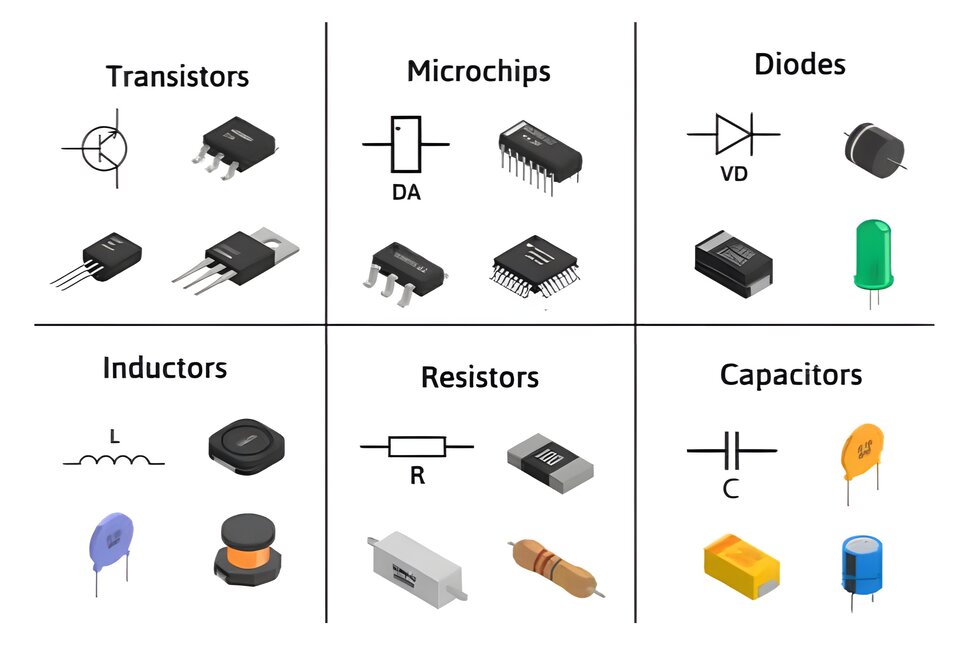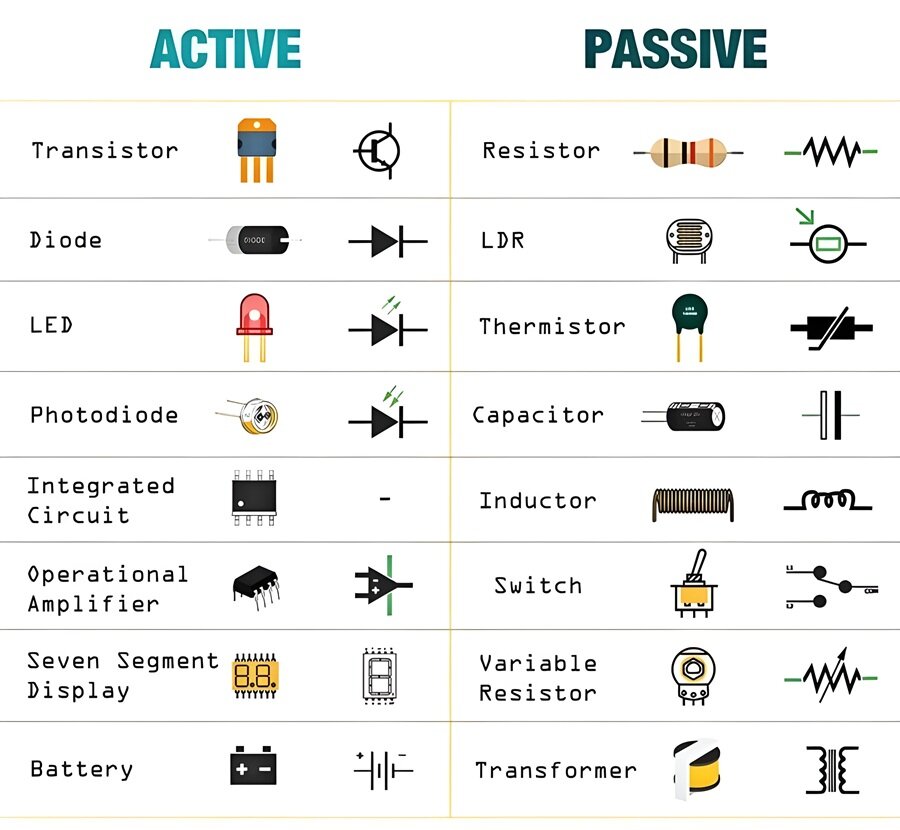The primary difference between active and passive electronic components lies in their ability to control electric current. Active components can control the flow of electricity, whereas Passive components cannot control the flow of electricity running through them. Here’s a detailed comparison between the two:
Active Components:
Definition
Active components are electronic components that can control the flow of electricity and are capable of amplifying signals. They require an external power source to operate.
Key Characteristics
- Amplification: They can increase the amplitude of a signal.
- Control: They can control the flow of current and voltage in a circuit.
- Power Source: They need an external power source for their operation.
- Functionality: They can introduce gain and are capable of signal modulation.
Examples
- Transistors: Used for switching and amplification.
- Diodes: Allow current to flow in one direction and can regulate voltage.
- Integrated Circuits (ICs): Contain multiple active and passive components and perform various functions like amplification, computation, and signal processing.

Passive Components:
Definition
Passive components are electronic components that cannot control electric current by means of another electrical signal and do not require any external power source to perform their function.
Key Characteristics
- No Amplification: They cannot increase the amplitude of a signal.
- No Control: They cannot control the flow of current and voltage; they can only respond to it.
- No External Power Source: They do not need an external power source to operate.
- Energy Storage: They can store energy in the form of electric or magnetic fields.
Examples
- Resistors: Limit current flow and divide voltages.
- Capacitors: Store and release electrical energy, filter signals.
- Inductors: Store energy in a magnetic field, filter signals, and block high-frequency noise.
- Transformers: Transfer electrical energy between circuits through electromagnetic induction, adjusting voltage levels.

Difference Between Active and Passive Electronic Components:
Here’s a table summarizing the differences between active and passive components in electronic circuits:
| Feature | Active Components | Passive Components |
|---|---|---|
| Definition | Components that can amplify power or control current flow | Components that cannot amplify power but can store or dissipate energy |
| Power Gain | Can provide power gain | Cannot provide power gain |
| External Power | Require an external power source to operate | Do not require an external power source to operate |
| Functionality | Can introduce energy into a circuit | Cannot introduce energy into a circuit |
| Examples | Transistors, diodes, integrated circuits | Resistors, capacitors, inductors |
| Signal Control | Can control the flow of current or voltage | Cannot control the flow of current or voltage |
| Polarization | Often polarized (have positive and negative terminals) | Usually non-polarized (except electrolytic capacitors) |
| Nonlinearity | Often exhibit nonlinear behavior (e.g., diodes and transistors) | Typically exhibit linear behavior (e.g., resistors) |
| Applications | Amplification, switching, modulation | Signal filtering, energy storage, voltage division |
| Dependency on Power | Performance depends on the power supply | Performance independent of power supply |
| Energy Role | Can add energy to a circuit | Can only dissipate or store energy |
| Complexity | Usually more complex in construction and operation | Simpler in construction and operation |
This table highlights the key differences between active and passive components, emphasizing their roles, functionalities, and dependencies in electronic circuits.
Active and Passive Components Conclusion:
Active and passive components are essential in electronic circuits, each serving distinct and complementary roles. Passive components are fundamental for managing current flow, storing energy, while active components are crucial for tasks requiring signal amplification, switching, and modulation, and filtering signals. Understanding the differences between these components helps in designing and troubleshooting electronic systems effectively.

